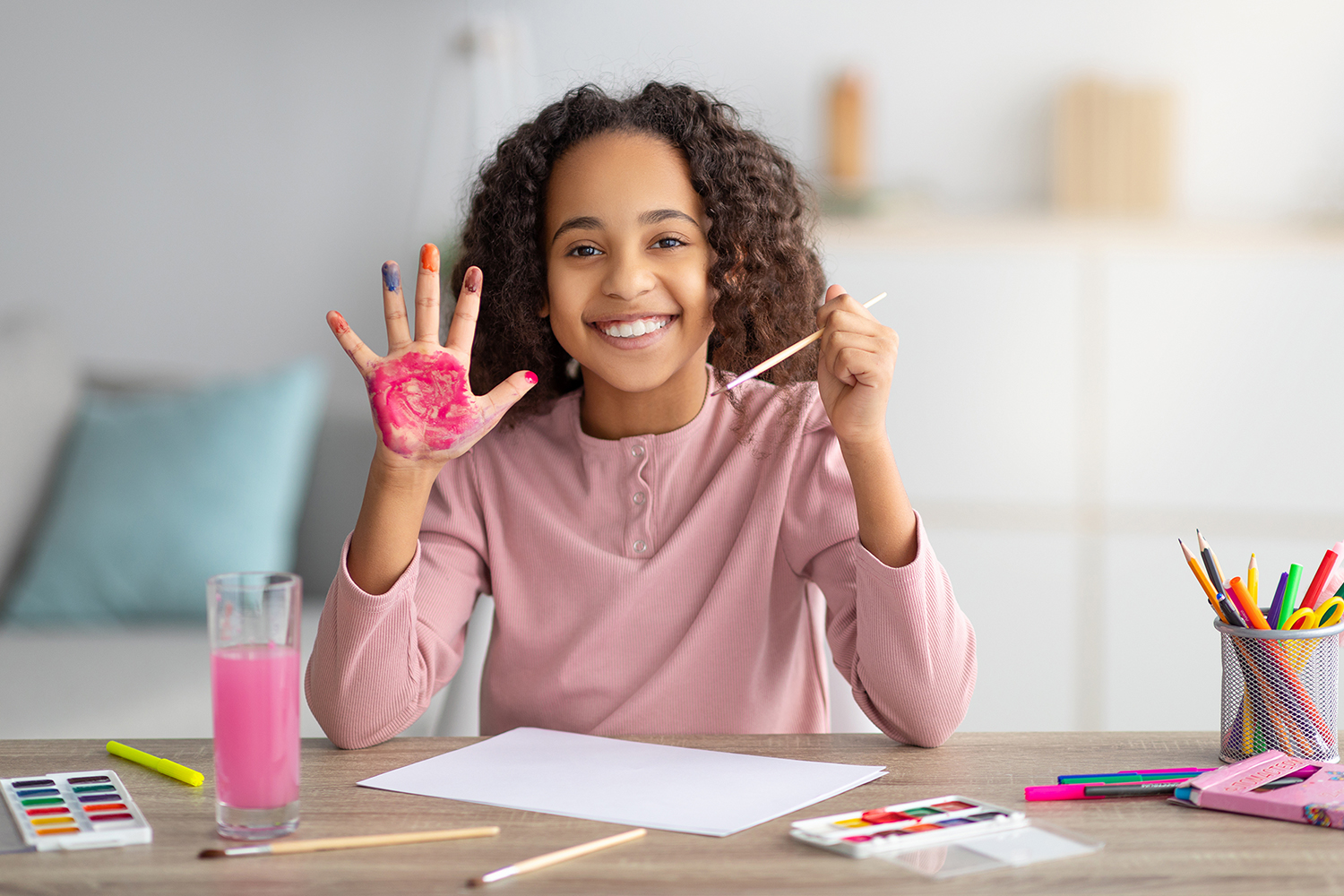By Guest Blogger Colleen Stewart
Children of all ages with mental health challenges and learning disabilities can benefit enormously from involvement in the arts. According to Scientific American, creative endeavors stimulate different parts of the brain than other forms of learning, which can create a positive environment for kids who have special considerations to contend with in terms of typical learning structures. When children and teens express themselves through the arts, whether it be painting, acting, music or other avenues, it can help lower stress and anxiety, improve self-esteem, moderate their moods, and create stronger relationships and social skills. In addition, it can have a positive impact on their academic life.
Below, you’ll find some information on how your child or teen can benefit from the arts and how to get them started.
How the Arts are Different
There’s a difference between painting a picture or molding clay and reading textbooks or performing mathematical calculations. According to a report by Americans for the Arts, children exposed to creativeendeavors perform better academically and have more advanced language skills than those who don’t. While children with learning disabilities do require assistive approaches to help them master traditional foundational educational concepts, incorporating the arts provides an environment in which they can feel good about their abilities and have something concrete they have control over. This can be especially helpful for teens, who go through so many changes in these pivotal years and often feel like they can’t control anything in the world around them.
Arts and Crafts at Home
If you have a teen with learning disabilities or mental health issues, ensuring you have plenty of arts and craft supplies at home can help them expand their imaginations with hands-on creative pursuits. You might allow for freeform activities or employ the use of online tutorials to encourage specific forms of artistic activity. Combining both structured and unstructured access to the arts can help your teen follow directions and step-by-step instructions, while still encouraging creativity.
Explore Different Types of Creative Pursuits
Involve your child in deciding what kinds of arts they’re most interested in. According to website Design Swan, there are a range of things you can do at home, including pottery, painting, jewelry making, watercolors and papercrafts. Teens may also be interested in taking classes in such media as oil painting, glasswork or ceramics. Check your local community art centers to learn about beginner classes that are available for young people. You might even consider joining them in the class! Not only can this be a fun bonding experience, but it will also give you greater insight into the way your child participates in a classroom environment and help you identify how you can help them manage their challenges.
The arts offer a great opportunity for teens with disabilities and mental health concerns of any kind find something they’re passionate about, develop a healthy outlet for expression, and even improve their academic performance. It’s a great way for them to develop their emotional health and set a strong foundation for making smart choices now and long into the future.
Bio: Colleen Stewart loves giving her two kids a healthy example to live by. Her passion for community and wellness inspired her and her husband to team up with their neighbors and create a playgroup that allows the adults and their kids to squeeze in a workout a few times a week. She created Playdate Fitness to help inspire other mamas and papas to make their well-being a priority, and set a healthy foundation for their little ones in the process.














